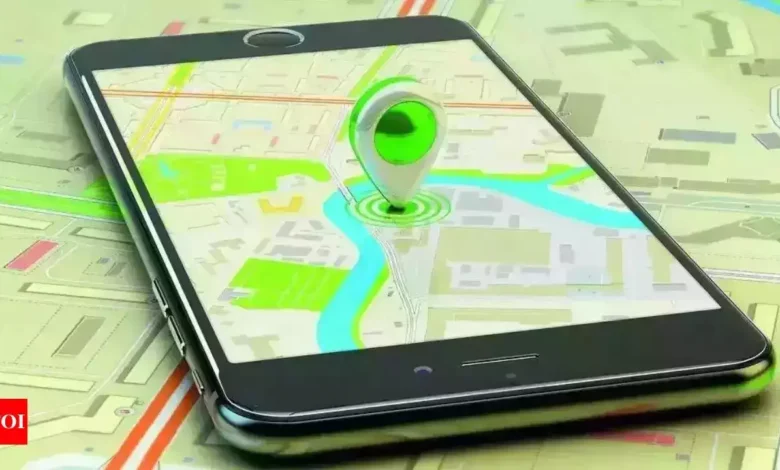Why Is Google Maps Secretly Powering WiFi Hardware Networks?

Google Maps role in wifi hardware is much deeper than most people realize. From enabling precise location tracking in wireless devices to silently supporting decentralized hotspot infrastructure, it quietly plays a core role in how devices find and stay connected to networks.
TLDR with keyword
Google Maps role in wifi hardware is not just about directions. It’s helping wifi devices and hotspot devices connect smarter by verifying physical locations, syncing GPS with routers, and supporting decentralized wireless networks. Even helium mobile hotspots and helium miners rely on location accuracy backed by Google’s mapping system.
What we will cover
- How Google Maps connects with WiFi hardware behind the scenes
- Real uses in hotspot devices and network syncing
- Role in decentralized wireless mesh systems
- Impact on helium mobile hotspots and miners
- Technical background that makes this integration work
- Future trends shaping wireless networks with map technology
How does Google Maps actually interact with WiFi hardware?
WiFi hardware includes access points, routers, mobile hotspots, signal extenders, and embedded chips in IoT gadgets. These devices need to know exactly where they are. That’s where Google Maps becomes the quiet support system. It provides location-based APIs that these devices ping to match their coordinates with real-world maps.
When a router wants to verify where it is or help other devices find it, it pings Google’s database to compare signal strength against its known global WiFi map. Google has created a large catalog of WiFi router locations using war-driving data, Android devices passively collecting signals, and logged address data from businesses.
Why do hotspot devices depend on Google’s mapping system?
Hotspot devices need to sync with a location to provide trusted coverage. This applies to devices used in homes, rural areas, or even transportation. These systems often work with mesh networking where accuracy matters. If a mobile hotspot moves and claims to serve a zone, it must prove its new location. Google Maps enables this.
For example, when a hotspot boots up, it can fetch location via GPS, then verify it against Google Maps. If it shows that the location is unregistered, spoofed, or inconsistent, the hotspot can be flagged or blocked. This protects network integrity.
What happens with location syncing in helium miners?
Helium miners must lock into a real location to receive tokens or rewards. To avoid fraudulent activity, they depend on location APIs and GPS lock-in. Google Maps strengthens this process.
If a helium mobile hotspot claims to be in one location but shows signal inconsistencies, mapping APIs help verify or disqualify it. By cross-referencing the provided GPS and WiFi fingerprint against Google’s live datasets, helium’s system can penalize suspicious changes.
How does decentralized wireless use this location data?
In decentralized wireless networks, no single central authority exists. Instead, hotspots and nodes verify each other and operate in peer-to-peer fashion. Without accurate location data, the whole system falls apart. This is where Google Maps adds unexpected support.
Using public map APIs and open-source positioning logic, decentralized mesh networks validate new nodes, ensure proper coverage mapping, and stop malicious duplicates. It builds location trust across the web of signals. Even blockchain-backed networks like helium or Nodle benefit from this structure.
What is the role of Google’s Street View data in all this?
Street View cars don’t just take pictures. They collect WiFi signal fingerprints while moving. These are stored with time stamped coordinates. When you turn on WiFi on your phone, Google may match your signal pattern against that historical data. Same thing applies to routers or IoT devices trying to validate where they are.
This adds another verification layer, helping distinguish spoofed devices from legitimate ones. If a device’s reported signal doesn’t match what’s expected in that area, it gets flagged. Street View datasets are part of the signal authentication pipeline.
Are there privacy risks with this map-hardware connection?
Yes, but most data use is anonymized. Devices ping APIs without exposing user identities. That said, Google still collects a lot of signal behavior in the background. While it benefits network security and fraud detection, it also raises concerns about tracking behaviors, especially in urban zones.
In some regions, regulators have forced Google to limit or delete certain WiFi signal datasets. Still, location validation is deeply tied to their mapping services, which supports wireless hardware quietly but constantly.
How do manufacturers integrate Google Maps into wifi hardware?
Manufacturers often install GPS modules and integrate Android Location Services into their firmware. This way, the device can request permission to use Google’s APIs, get geodata, and log it for sync.
For example, some hotspot makers include fallback logic where GPS fails, but WiFi triangulation using Google Maps APIs still works. They use open location codes (Plus Codes) for precise tagging. Devices without screens may blink LED signals for status, using back-end logs to ping maps quietly.
Can you run WiFi networks without Google’s map support?
Technically yes, but accuracy suffers. OpenStreetMap and local maps exist, but they don’t have Google’s scale. Without Google’s signal database, syncing routers or validating mesh hotspots takes longer and fails more often. Accuracy drops in cities with dense device layers.
Projects trying to create alternative mapping include Mozilla Location Service, but they lack historical signal fingerprints. Google has the edge due to its global device ecosystem.
What are real examples of this connection in action?
In the US, several smart city projects use mesh WiFi with location-based routing. Devices authenticate using Google APIs to lock their location, helping buses or drones hop between signals.
Some disaster zones use popup hotspots that rely on map verification to avoid GPS errors in emergencies. Telecom firms installing helium nodes use map APIs to validate installer addresses.
What’s the future of this map and WiFi hardware relationship?
As networks shift toward community-driven systems, like helium and decentralized IoT, location integrity becomes more important. Google Maps continues feeding that need with live mapping, street signal tagging, and satellite sync.
With more satellite WiFi, drone relays, and sensor networks, maps will be the foundation layer for device trust. Manufacturers may depend more on hybrid APIs blending GPS, map sync, and motion data.
The mix of spatial computing, augmented WiFi nodes, and decentralized wireless stacks will still rely on something to say, “this device is where it claims to be.” Right now, that’s still Google Maps.
FAQs
Can helium mobile hotspots work without Google Maps?
They can, but may lose syncing reliability. Their reward systems depend on real location trust. Google Maps strengthens that trust.
Do all routers use Google Maps APIs?
Not all, but many smart routers and mobile hotspots request location data for verification. Especially mesh systems that need to map coverage areas.
Is this process always visible to users?
No. Most map-hardware connections happen in the background via firmware calls or startup pings. Users rarely notice.
Does Google profit from this connection?
Indirectly, yes. By improving signal maps and device accuracy, it strengthens its own ecosystem—boosting Android, search, ads, and services.
Can open-source map projects replace Google in WiFi syncing?
They can try, but currently lack the same depth of signal history, GPS sync logs, and verified location datasets.




